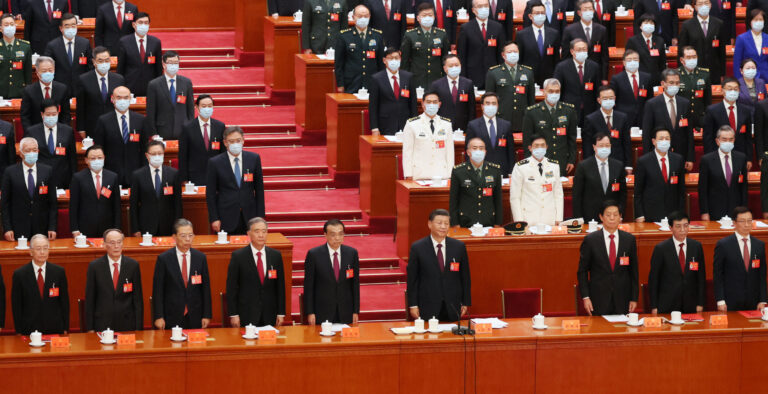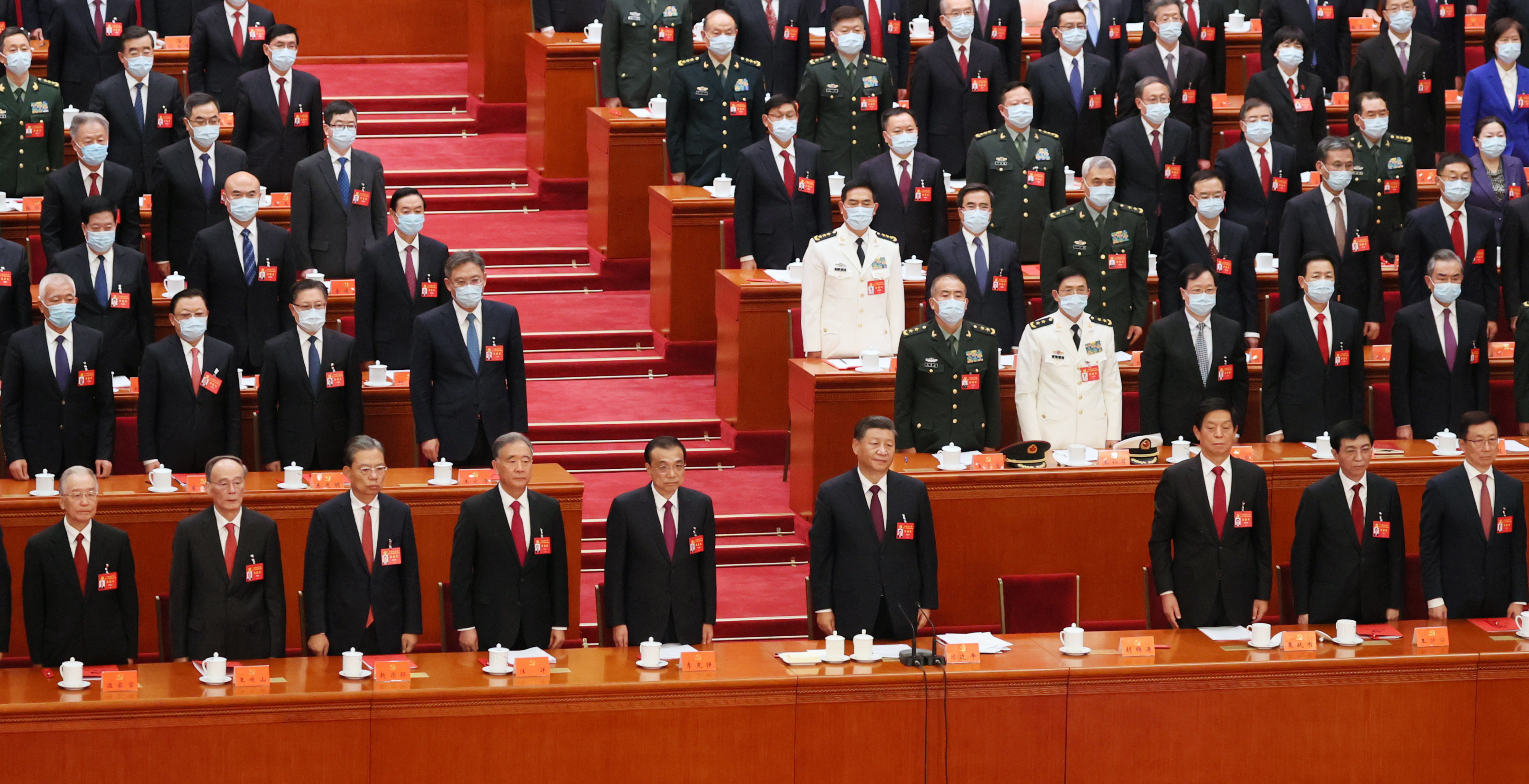

In recent years, as progress in artificial intelligence (AI) has accelerated, nearly every major power has pledged to develop advanced AI capabilities and effectively integrate AI into their armed forces. Yet none have pursued those efforts as purposefully as China. Not only has Beijing issued an ambitious plan to make China the world’s leading AI power by 2030, but the Chinese Communist Party (CCP) has unveiled an aggressive innovation-driven strategy for the Chinese military, the People’s Liberation Army (PLA). Likewise, Xi Jinping, the General Secretary of the CCP, has consistently emphasized China’s commitment to AI development and “intelligent warfare”– most recently in his landmark report this fall to the 20th Party Congress.
If China’s strategic ambitions for AI are clear, how it intends to integrate AI into the PLA remains opaque. The CCP’s goals for militarized AI are still shrouded in mystery, even as the PLA clearly views AI as a technology that will be vital for driving next-generation warfare.
However, the recently established PLA Strategic Support Force (SSF) offers at least some clues into how Beijing aims to infuse AI capabilities throughout the military. Although the precise purpose of the SSF is not yet well understood, the organization has been charged with something like a mandate to innovate and tasked with integrating numerous “strategic functions.” Given the breadth of its organizational structure and mandate, the SSF appears to be at the forefront of the PLA’s efforts to modernize around new technologies like AI.
To better understand the SSF, we recently investigated whether it will have a “game-changing” impact on future conflicts in which mastering the information domain and integrating AI effectively are likely to dictate the winner. Our research into the SSF took a deep dive into open-source information, convened subject matter experts, and looked to scholarly analysis to form a more precise understanding of what role the SSF might be playing in the PLA’s AI innovation—and what role it definitely is not.
Overview of the Strategic Support Force
In 2015, China undertook substantial reforms of its military, motivated in part to shift PLA capabilities from a focus on land-based territorial defense to extended power projection for the purposes of securing China’s strategic interests in space, cyberspace, and the far seas. One key element of these reforms was creation of the SSF, which centralized the missions for these broader domains. The SSF was tasked with integrating numerous “strategic” functions and capabilities that had previously been scattered across the PLA, including space, cyberspace, information warfare, and psychological warfare. Today, the SSF is comprised of two divisions that encompass those functions: the Space Systems Department, which is home to all space-related missions, and the Network Systems Department, which houses the PLA’s information warfare activities, broadly construed.
The SSF’s overarching purpose is to obtain information dominance in order to facilitate decision superiority and, in turn, victory. Analysts have recently concluded that SSF missions likely support the pursuit of information dominance and fall into two categories: providing strategic information superiority and support capabilities directly to the PLA’s most senior leadership, including counter-space operations and offensive cyber warfare, as well as offering information support services to theater military commands.
The SSF also appears designed in part to improve the overall “jointness” of the PLA, or its ability to carry out joint operations. Historically, the PLA has been challenged by integrated joint operations on account of its struggle with the innovation and implementation of new command and control as well as intelligence, surveillance, and reconnaissance capabilities. Since the information support provided by the SSF likely encompasses “intelligence, surveillance, and reconnaissance to enable operational and strategic objectives,” some experts have postulated that the SSF plays a key role in improving the PLA’s overall jointness.
To fulfill its mission set, the SSF also appears to have several mechanisms for developing or acquiring technology. Although the SSF is not the only body in the PLA to serve that function, evidence has shown that the SSF is responsible for more AI-related equipment contracts than any other PLA service. More specifically, the SSF has invested heavily in AI innovation, leveraging public-private partnerships to gain new technologies for intelligence; surveillance and reconnaissance; autonomous vehicles; information and electronic warfare (EW); simulation and training; predictive maintenance; and target recognition.
The PLA’s AI innovation
The U.S. National Security Commission on Artificial Intelligence concluded in its final report last year that “although AI will be ubiquitous across all domains, the high-data volumes associated with the space, cyber, and information operations domains make use cases in those domains particularly well-suited for prioritized integration of AI-enabled applications in wargames, exercises, and experimentation.” These are precisely the domains in which the SSF operates. Many of the SSF’s functions involve the processing of diverse, high-volume, and rapidly changing streams of information at speeds that exceed human capacity—all excellent candidates for the application of AI. AI can help, for example, with creating and maintaining situational awareness by collecting, combining, and analyzing information, perhaps in the service of making predictions. Additionally, AI is useful for analyzing the consequences of potential courses of action, as well as planning and wargaming.
However, command decision-making is done by theater military commands or the Joint Staff Department. Meanwhile the actual development of artificial intelligence for decision-support applications is likely done by other PLA components such as China’s National University of Defense Technology and its Academy of Military Science, not by the SSF. Nevertheless, in its provision of information support to these decisionmakers, the SSF is likely to have a significant role in interfacing with such AI systems and, in turn, supporting decision-making.
Meanwhile, of the 12 major military applications of AI that China is developing, at least five are integral to the SSF’s mission: intelligent satellites; intelligence, surveillance, and reconnaissance (ISR) software; automated cyberattack software; cognitive electronic software; and possibly autonomous vehicles. Grouped by domain, we find the following:
For space operations, we conclude that China is likely exploring the use of AI, including for the management of large constellations of satellites; as well as in analysis of earth observation datasets (processing of and target identification in satellite imagery); cognitive radio, a “smart” radio designed to make space-based communications more efficient by autonomously shifting channels to avoid interference and congestion; autonomous satellite operation to compensate for limited communications windows and bandwidth and long latencies; and reducing the workload of ground satellite operators.
In the cyber/network domain or the Network Systems Directorate, cybersecurity and electronic warfare both rely on sorting through large amounts of data in real-time to identify threats and update defenses. For example, AI-guided navigation of adversary networks can inform both technical reconnaissance and cyber-attack. This mission falls within the SSF’s purview, and it is plausible that the force’s creation is, in part, designed to cement the likely link between cybersecurity and electronic warfare for China. Automation can also improve the speed and scale at which cyber defenses can be implemented, alleviating constraints previously faced by the PLA.
Additionally, AI can help with electronic warfare, increasing autonomy of EW systems, for example, or recognizing and classifying signals from radar or communications systems, detecting and categorizing jammers, improving direction-of-arrival estimates of jamming signals, developing efficient anti-jamming protocols, and updating defenses in real time (cognitive electronic warfare).
Although many applications of AI within the SSF mission set can be identified today, its most significant long-term impacts may be less predictable. Additionally, the plans for AI that have been formalized in China’s white papers do not necessarily correlate to actual progress in AI innovation. Indeed, much of China’s significant investment in AI appears to be commercial—and likely not yet very relevant to military missions. We concur with assessments that suggest that prior estimates of China’s current AI capabilities are likely overblown. This means both that we are not likely to see AI integrated immediately into the PLA mission space and that, when AI systems are adopted, they may be fragile, unsafe, or unreliable.
We conclude that the SSF is indeed tasked with obtaining information dominance to achieve decision superiority and, in turn, victory. With respect to AI, that means the SSF will necessarily adopt and integrate AI applications as it seeks to remedy deficiencies in the PLA’s prior approach to securing and leveraging information dominance. But it does not mean that the SSF will serve as the PLA’s focal point for AI innovation overall.
What is still missing, however, is a clear understanding of which AI the SSF is prioritizing to achieve its ends. Not all AI is the same. While many of the SSF’s missions are AI-amenable, and there may be synergies in applying AI across them, it is unclear which applications the SSF is going to pursue, whether those synergies are actually available, and whether the SSF is capable of attaining them. For those specific applications of AI that differ across missions, some prioritization must inevitably occur in the innovation process.
China is determined to become a global leader in AI and to apply the technology to its military missions in an effort to overcome U.S. superiority in the Indo-Pacific. In many ways the SSF is well-positioned to help achieve those aims, including a permissive policy environment that promotes innovation, the SSF’s explicit charge for innovation, and high-level leadership support for “intelligentization.” The SSF also appears to be building connections with China’s high-tech commercial sector and its academic enterprise. These efforts are consistent with China’s initiative for civil-military fusion, which is intended to overcome barriers that have made it difficult for the PLA to draw on the commercial sector.
However, the SSF also faces formidable obstacles in the execution of the PLA’s innovation-driven plan. The SSF and PLA in general are likely to face several challenges in the adoption of AI, including in attracting and retaining a high-quality high-tech workforce, as well as China’s inability to engineer and fabricate domestically the advanced logic and memory chips that are essential to developing cutting-edge AI—a glaring weakness now that the U.S. has terminated its access to high-end semiconductors. Moreover, research institutions in the U.S. and other Western nations are now increasingly wary of collaborating with Chinese researchers in areas such as AI that have significant military potential.
The PLA’s limited combat experience, with the consequent dearth of associated “ground truth” data, may impede its development of decision-support AI systems. More significantly, unless the PLA focuses on understandable, trustworthy AI—which it does not appear to be concentrating attention on—utilization of AI systems with opaque operation, indeterminate regions of validity, and uncertain failure modes could be very damaging.
With its charge to innovate and focus on space, cyber and electromagnetic missions, the SSF will be a significant player in the PLA’s adoption of AI, and it is likely to adopt AI in aspects of its own functions and missions. But we do not see it as playing a central role in the PLA’s overall AI innovation and development.
Gerald L. Epstein is a distinguished fellow in the Center for the Study of Weapons of Mass Destruction at National Defense University.
Amy J. Nelson is a David M. Rubenstein Fellow in the Foreign Policy program and with the Center for Strategy, Security and Technology.
The views expressed in this paper are those of the authors and are not an official policy or position of the National Defense University, the Department of Defense, or the U.S. Government.